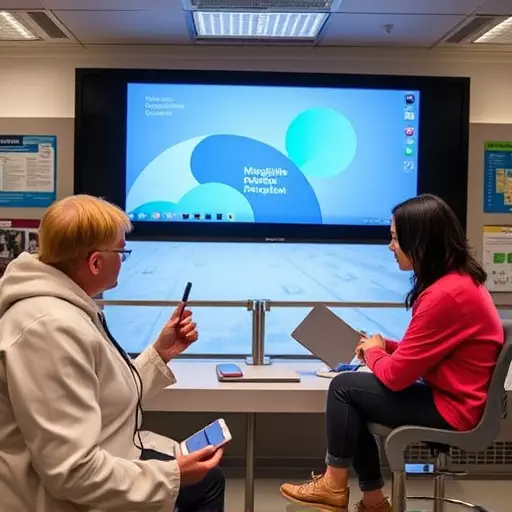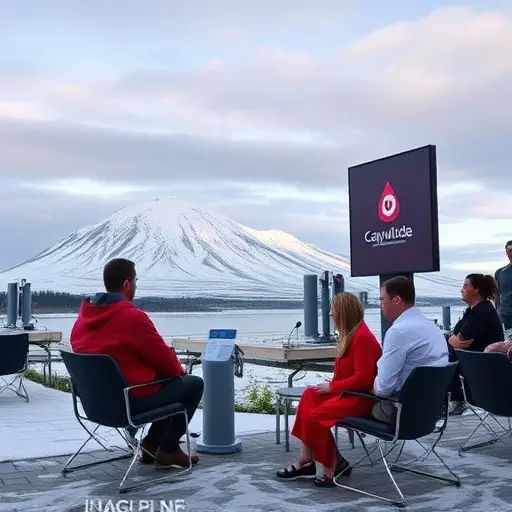In Gary-Lake Station, semaglutide has evolved beyond diabetes management to become a powerful tool in weight loss and cardiovascular health. Healthcare professionals utilize interactive dashboards for real-time patient progress tracking, enabling multidisciplinary teams to create personalized care plans. Social media campaigns raise awareness about semaglutide's capabilities, fostering community support and engagement. Multidisciplinary care teams leverage these tools to transform weight management, sharing success stories and educational content online. The future of GLP-1 therapy in Gary-Lake Station includes advanced technology like AI for predictive analytics, further enhancing patient outcomes through innovative multidisciplinary approaches.
In the realm of healthcare innovation, interactive dashboards emerge as powerful tools for managing complex treatments like Semaglutide therapy in Gary-Lake Station. This article explores how these dynamic visual aids can significantly enhance patient care within GLP-1 teams. By delving into the multifaceted impact of Semaglutide and its implementation through multidisciplinary approaches, we uncover the art of optimizing treatment outcomes. Additionally, we discuss leveraging social media to build supportive communities, highlighting the importance of continuous improvement in healthcare via interactive tools for a healthier future.
- Understanding Semaglutide in Gary-Lake Station: A Drug with a Multifaceted Impact
- The Role of Interactive Dashboards: Visualizing Weight Trends for Optimized Care
- Unlocking Data Insights: Tracking Patient Progress in GLP-1 Teams
- Multidisciplinary Care Teams: Enhancing Semaglutide Therapy Implementation
- Leveraging Social Media: Building Awareness and Supportive Communities
- Future Prospects: Continuous Improvement through Interactive Tools
Understanding Semaglutide in Gary-Lake Station: A Drug with a Multifaceted Impact

Semaglutide, a groundbreaking drug, has found its place in Gary-Lake Station’s healthcare landscape, offering multifaceted benefits for patients with various metabolic conditions. This medication, primarily known for its role in type 2 diabetes management, is now recognized as a powerful tool in weight management and cardiovascular health. The impact of semaglutide extends beyond blood sugar control; it represents a multidisciplinary approach to patient care.
In Gary-Lake Station, healthcare professionals are leveraging social media platforms to raise awareness about semaglutide’s capabilities. By utilizing these digital tools, they can reach a wider audience, share success stories, and educate folks on the multifaceted nature of this drug. This strategy ensures that patients are well-informed about the potential advantages of semaglutide in their healthcare journeys, fostering a more comprehensive understanding of its role in managing weight trends and associated health issues.
The Role of Interactive Dashboards: Visualizing Weight Trends for Optimized Care

Interactive dashboards play a pivotal role in transforming the way healthcare professionals track and manage weight trends among GLP-1 therapy patients, particularly those receiving semaglutide treatment in Gary-Lake Station. By leveraging cutting-edge data visualization tools, these dynamic interfaces offer a comprehensive view of patient progress, empowering multidisciplinary teams to make informed decisions. With real-time updates, customizable alerts, and intuitive navigation, healthcare providers can optimize care plans tailored to individual needs.
This innovative approach goes beyond traditional charting methods, fostering collaboration among endocrinologists, nurses, dietitians, and patients themselves. By leveraging social media platforms for semaglutide awareness campaigns and education, healthcare organizations can further enhance patient engagement. Interactive dashboards not only streamline workflows but also serve as a powerful communication tool, ensuring everyone involved in semaglutide care stays aligned and focused on achieving positive outcomes.
Unlocking Data Insights: Tracking Patient Progress in GLP-1 Teams

In the realm of healthcare innovation, interactive dashboards have emerged as a powerful tool to unlock valuable data insights, especially within GLP-1 (Glucagon-like Peptide-1) therapy teams. By tracking weight trends over time, these dynamic visual aids provide a comprehensive view of patient progress and are pivotal in guiding clinical decisions. In the context of semaglutide treatments, a key component of Gary-Lake Station’s multidisciplinary care approach, interactive dashboards offer a real-time glimpse into individual patient journeys.
Through leveraging social media platforms for semaglutide awareness campaigns, healthcare professionals can collect and analyze a vast array of data points. This collective effort enables more personalized care, as trends in weight management become evident across diverse populations. By adopting these multidisciplinary approaches to semaglutide care, healthcare teams can ensure optimal patient outcomes and foster a culture of evidence-based practice, ultimately enhancing the overall effectiveness of GLP-1 therapy.
Multidisciplinary Care Teams: Enhancing Semaglutide Therapy Implementation

Multidisciplinary Care Teams (MCTs) play a pivotal role in enhancing the implementation and outcomes of Semaglutide therapy, particularly within the context of Gary-Lake Station and other communities focusing on this treatment. By bringing together healthcare professionals from diverse backgrounds, such as endocrinologists, nurses, dietitians, and psychologists, MCTs can offer comprehensive care tailored to each patient’s unique needs. This collaborative approach ensures that patients receiving Semaglutide therapy benefit from a coordinated effort aimed at improving their overall health and managing their weight effectively.
Leveraging social media platforms is another innovative strategy to create awareness about Semaglutide and its potential in weight management. By sharing success stories, educational content, and real-world examples of how MCTs are making a difference, these platforms can reach a wide audience. This digital approach not only disseminates valuable information but also encourages patient engagement and interaction, fostering a sense of community around Semaglutide therapy and multidisciplinary care.
Leveraging Social Media: Building Awareness and Supportive Communities

Leveraging social media platforms is a powerful strategy for building awareness and fostering supportive communities around semaglutide treatments, especially in the context of Gary-Lake Station’s GLP-1 teams. By creating online spaces dedicated to sharing information, experiences, and support related to semaglutide use, healthcare professionals can implement multidisciplinary approaches to care. These virtual hubs encourage open dialogue between patients, caregivers, and medical experts, fostering a sense of community and collective learning.
Through regular posts, live streams, and interactive discussions, social media enables individuals with similar interests or challenges to connect, share success stories, and offer encouragement. This network effect can significantly enhance patient engagement and adherence to treatment plans involving semaglutide, ultimately contributing to improved health outcomes in the Gary-Lake Station community and beyond.
Future Prospects: Continuous Improvement through Interactive Tools

The future of GLP-1 therapy lies in continuous improvement driven by innovative tools and multidisciplinary approaches to semaglutide care. Interactive dashboards offer a promising avenue for enhancing patient monitoring and outcomes. By leveraging social media for semaglutide awareness, healthcare providers can further engage patients and foster community support. These digital solutions not only facilitate the tracking of weight trends but also provide actionable insights, enabling personalized adjustments to treatment plans.
As technology advances, the integration of artificial intelligence and machine learning into these interactive dashboards could revolutionize patient care. Such advancements could predict weight fluctuations, identify at-risk individuals, and proactively suggest interventions, ultimately improving long-term outcomes for patients on semaglutide therapy in Gary-Lake Station and beyond.
